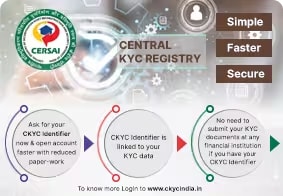



Although blank cheques and crossed cheques are common, they are not the only types of cheques you can issue. A cheque is written by an individual or an organisation for large payments. Unlike cash, cheque payments are recorded with the bank and reflected in your bank account. But what is a cheque?
A cheque is a paper instrument that orders the bank to transfer money from the sender’s account to another account. It is issued to a current or savings account holder to conveniently transfer money within and outside the bank. A cheque is a common method of money transfer among merchants and small businesses. Cheques are negotiable instruments covered under the Negotiable Instrument Act, of 1881. In a cheque transaction, three parties are involved namely, the drawer, the drawee, and the beneficiary or payee. The drawer writes the cheque in the name of the beneficiary, requesting the bank to transfer the mentioned amount to the beneficiary from their account. The banks are the drawer in cheque payments.


There are mainly ten types of cheques in India that you should know about.” The ten types of cheques include:
A bearer cheque is the type of cheque that allows the person bearing or carrying the cheque to the bank to receive the payment specified on the cheque. These cheques have the words “or bearer” printed in front of the name of the payee. It means that the amount of the cheque issued can be either received by the payee or the bearer. It also makes a bearer cheque transferable, as anyone who is carrying it can receive the payment. The bank need not request the authorisation of the issuer to make the payment of this cheque.
The second type of cheque is the order cheque. An order cheque is the one that has the words “or bearer” cancelled out. It means that only the individual whose name is mentioned as the payee can receive the specified sum of money. In this case, the bank does not check the bearer’s identity before making the payment.
A crossed cheque is a type of cheque where the issuer makes two slanted parallel lines on the top left corner of the cheque, with the word ‘a/c payee’ written. It means that the specified sum of the cheque, regardless of who is handing it over, will only be transferred to the individual/organisation whose name is mentioned as the payee. A crossed cheque is also safer because it can be cashed only at the payee’s bank.
An open cheque does not have crossed lines, and hence, is also called an uncrossed cheque. An open cheque can be cashed at either of the banks, namely, the payer’s bank or the payee’s bank. Also, an open cheque is transferable by the payee, which means they can make someone else the payee. The issuer of the open cheque is required to sign on both the front and back of the cheque.
A post-dated cheque bears a date later than the date it was issued on. It can only be cashed after the date specified by the payer. The post-dated cheque can be valid after the mentioned date but not before it. Hence, even if it is presented to the bank, the bank will not process it until the mentioned date.
A stale cheque has already passed its validity date and can no longer be cashed. Currently, a cheque is considered valid until three months from its issued date.
Issued by a bank, a traveller’s cheque can be cashed by the payee at another bank in another country. The payment will be received in that country’s currency. It becomes useful when you are heading on a foreign trip and do not wish to carry too much cash. A traveller’s cheque does not have an expiry date.
A self-cheque has the word ‘self’ written as the payee. It is used by the issuer to withdraw money from their bank account. A self-cheque can be cashed only at the issuer’s bank.
A banker’s cheque is issued by the bank itself. A bank issues a banker’s cheque on behalf of an account holder to issue payment to another person in the same city. Banker’s cheques are only valid for three months, however, post their validity period they can be revalidated if certain conditions are fulfilled.
A blank cheque is one that has the sign of the issuer, and no other details are filled in. Blank cheques pose a high risk because if lost, anyone who finds it can fill in any amount and issue it to themselves.
A cheque is a document that tells your bank to transfer the mentioned amount to a person or organisation. There are mainly ten types of cheques in India that you should know about.
The following are the common features of a cheque • An individual holding savings or current account can issue a cheque. • The payee once mentioned cannot be edited or changed. A fresh cheque leaf needs to be issued in case of changing the payee. • Similarly, the amount mentioned on the cheque cannot be altered. • A cheque must be signed before submitting otherwise it is considered invalid. • A cheque carries validity if it is signed and dated. They are usually valid from the date mentioned on them. A cheque older than 6 months is called a stale cheque however, they are still valid and can be used for transactions. • Signed cheques without any amounts mentioned in them are known as blank cheques. • A cheque consists of cheque number, MICR, and entries to mention the payee’s name, drawn amount, and signature of the drawee.
Cheques accompany several upsides and downsides. Here are some notable advantages and disadvantages of using cheques. Advantages of using cheques • They are a better alternative to carrying cash. • With a unique number assigned to every cheque leaf, they are easier to track down if lost. • You can issue cheques to other parties since they are negotiable instruments. • Several bank digital kiosks also process cheque transactions digitally so, you don’t require to visit the bank always. Downsides of using cheques • Sometimes, banks may deny cheque processing for a few reasons, such as low account.balances, signature mismatch and more because they are not legal tenders. • Digital money transfer methods are becoming popular since cheques are a bit time-consuming to process payments. • Cheques are issued only to account holders, so anyone who wishes to use cheques first must open a bank account.
Applying for a new chequebook has now become convenient as you can get it through various online and offline channels. Use any of the below-mentioned methods to get a new chequebook. • Online mode – You can log into your net banking account and navigate to the services section to request a new chequebook. After paying the required amount, you will receive it at your registered mailing address. If you are an IDFC FIRST Bank account holder, new chequebook issuance is completely free of charge. • Mobile app – Like net banking, you can also use your mobile banking app to apply for a new chequebook. The process is similar to net banking and consumes hardly a couple of minutes. • ATM – If you don’t have an active net banking or mobile banking service, you can visit your nearby ATM and access your account using the debit card and pin. Later, navigate to the services section, choose the ‘issue a new chequebook’ option and proceed as instructed. • Bank branch – Alternatively, you can visit the bank branch during active hours and apply for a new chequebook.
Every cheque carries a unique 6-digit number inscribed on the bottom of the cheque leaf. This number is known as the cheque number, and it is used to identify the status of the cheque. The cheque number is followed by a MICR number and a portion of the account number with which the account number is linked. To find the cheque number, you can look at the bottom left corner of your cheque leaf. The first 6 digits that appear on the leaf are your cheque number. The remaining numbers denote the details of issuing branch, city, and the account linked.
Specific steps are involved while writing a cheque. One must follow all the steps precisely when filling it out. Here are the quick and simple steps to write a cheque. 1. Begin with crossing the cheque. Crossing a cheque means drawing parallel lines at the left top corner. If it is an account payee cheque, write ‘Account Payee’ between the parallel lines. 2. Fill out the space provided for entering the date and payee’s name. 3. Subsequently, write the amount in words and end it with the word ‘only’. It marks the end of the amount that you have entered. 4. Now enter the amount in numerals and end it with ‘/- ‘. 5. Verify all your entries and sign at the bottom of the cheque to authorise the cheque. 6. For specific reasons, the bank may also ask you to enter your account name and number at the back of the cheque leaf.
Banks take utmost care when processing cheque transactions for security reasons. So, individuals must be cautious when filling out details. The following are the important things to keep in mind while writing a cheque. • When filling out details, never leave spaces to avoid any chances of misuse. • Do not overwrite or cross-mark on the cheque as unclear entries may reject your cheque. • Never leave any column blank for security reasons. • Mark your signature clearly and use the same signature as present in the bank record. • Do not staple or fold the cheque as it may corrupt the MICR code.
Cheque payment includes multiple parties, and the payment processing takes place in chronological order. Here are the various parties included. 1. Drawer – A drawer is a person who writes the cheque and authorises the bank to withdraw money from his/her account and pay it to the beneficiary. In simple terms, the drawer is the account holder who issues the cheque. 2. Drawee – It is the bank that initiates the cheque payment process. The cheque is drawn at the drawee bank. 3. Payee – It is another term used for the beneficiary. The payee is the person who receives the payment from the cheque-holder through the drawee bank. 4. Endorser – If the payment rights are transferred to a third party, the payee, in this case, becomes the endorser. 5. Endorsee – The endorsee is the party to whom the payment rights are passed from the payee (the endorser). So that was everything about the types of cheques that you can issue and receive. To know more about cheques, head over to the IDFC FIRST Bank website, where you can find detailed explanations pertaining to different kinds of cheques they offer. To know more about applying for new products, you can reach out to IDFC FIRST Bank Customer Service on 1800 10 888.